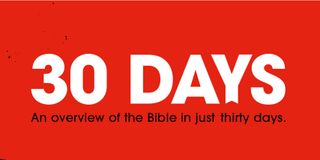Come, Holy Spirit
Introduction
Spending time in the presence of God is the most important activity of your life. You need God’s presence in your life more than you need anything else. But where do you find the presence of God?
I remember so well the first time I heard someone pray one of the most ancient prayers of the church, ‘Come, Holy Spirit’, with a real expectation that the Holy Spirit would come! It was on a Sunday night in 1982. We had a meeting in the crypt after our evening service at HTB. As we prayed, ‘Come, Holy Spirit’ we saw remarkable events occur. We saw people being filled with the Holy Spirit with physical manifestations similar to those described in the book of Acts on the day of Pentecost. We saw extraordinary physical healings take place the following day when again someone prayed, ‘Come, Holy Spirit’.
God is always present with his people today by his Holy Spirit. When you pray, ‘Come, Holy Spirit,’ you are asking for an increased sense of the presence of God. There are times in the New Testament when the Holy Spirit filled a gathering of people sovereignly and spontaneously (Acts 2:2; 10:44). There are other times when the disciples prayed for the Holy Spirit: ‘After they prayed, the place where they were meeting was shaken. And they were all filled with the Holy Spirit’ (4:31). In the Old Testament passage for today we read how ‘the glory of the LORD filled his temple’ (1 Kings 8:11).
Each of the passages for today tells us something about how to enjoy God’s empowering presence that comes through the Holy Spirit.
Psalm 76:1–12
For the director of music. With stringed instruments. A psalm of Asaph. A song.
1 God is renowned in Judah;
in Israel his name is great.
2 His tent is in Salem,
his dwelling place in Zion.
3 There he broke the flashing arrows,
the shields and the swords, the weapons of war.
4 You are radiant with light,
more majestic than mountains rich with game.
5 The valiant lie plundered,
they sleep their last sleep;
not one of the warriors
can lift his hands.
6 At your rebuke, God of Jacob,
both horse and chariot lie still.
7 It is you alone who are to be feared.
Who can stand before you when you are angry?
8 From heaven you pronounced judgment,
and the land feared and was quiet—
9 when you, God, rose up to judge,
to save all the afflicted of the land.
10 Surely your wrath against mankind brings you praise,
and the survivors of your wrath are restrained.
11 Make vows to the LORD your God and fulfill them;
let all the neighbouring lands
bring gifts to the One to be feared.
12 He breaks the spirit of rulers;
he is feared by the kings of the earth.
Commentary
Longing for God’s empowering presence
The temple in Jerusalem was not primarily a place of sacrifice, but the place of God’s presence. The psalmist writes, ‘In Judah God is known; his name is great in Israel. His tent is in Salem, his dwelling-place in Zion’ (vv.1–2). ‘Salem’ is the old Jebusite name for Jerusalem. ‘Zion’ is a word often used to refer to Jerusalem as the focal point of God’s presence (v.7, AMP), among his people in the Old Testament. This is the place of his tent (‘abode’, RSV). This is where God dwells.
This is why the people of God were so passionate about Jerusalem, and in particular the temple. They longed, as we all do deep inside, for the presence of God. The amazing truth is that, through Jesus, we can know the presence of God in and among us, his people, wherever we are. He dwells in you by his Spirit.
Prayer
Lord, I long for your presence with me. Thank you that your dwelling place is with your people. Please fill us again today with your Holy Spirit and make your name great among us.
Acts 13:42–14:7
42 As Paul and Barnabas were leaving the synagogue, the people invited them to speak further about these things on the next Sabbath. 43 When the congregation was dismissed, many of the Jews and devout converts to Judaism followed Paul and Barnabas, who talked with them and urged them to continue in the grace of God.
44 On the next Sabbath almost the whole city gathered to hear the word of the Lord. 45 When the Jews saw the crowds, they were filled with jealousy. They began to contradict what Paul was saying and heaped abuse on him.
46 Then Paul and Barnabas answered them boldly: “We had to speak the word of God to you first. Since you reject it and do not consider yourselves worthy of eternal life, we now turn to the Gentiles. 47 For this is what the Lord has commanded us:
“‘I have made you a light for the Gentiles,
that you may bring salvation to the ends of the earth.’”
48 When the Gentiles heard this, they were glad and honoured the word of the Lord; and all who were appointed for eternal life believed.
49 The word of the Lord spread through the whole region. 50 But the Jewish leaders incited the God-fearing women of high standing and the leading men of the city. They stirred up persecution against Paul and Barnabas, and expelled them from their region. 51 So they shook the dust off their feet as a warning to them and went to Iconium. 52 And the disciples were filled with joy and with the Holy Spirit.
In Iconium
14 At Iconium Paul and Barnabas went as usual into the Jewish synagogue. There they spoke so effectively that a great number of Jews and Greeks believed. 2 But the Jews who refused to believe stirred up the other Gentiles and poisoned their minds against the brothers. 3 So Paul and Barnabas spent considerable time there, speaking boldly for the Lord, who confirmed the message of his grace by enabling them to perform signs and wonders. 4 The people of the city were divided; some sided with the Jews, others with the apostles. 5 There was a plot afoot among both Gentiles and Jews, together with their leaders, to ill-treat them and stone them. 6 But they found out about it and fled to the Lycaonian cities of Lystra and Derbe and to the surrounding country, 7 where they continued to preach the gospel.
Commentary
Filled with God’s empowering presence
From the day of Pentecost, God’s empowering presence came upon his people. In today’s passage we read that they were, once again, ‘filled with joy and with the Holy Spirit’ (13:52). Every Christian now has the Holy Spirit dwelling within them (Romans 8:9).
In this passage, we see the impact of God’s empowering presence when you are filled with the Holy Spirit:
1. Effectiveness
In Antioch, crowds gathered to hear the word of the Lord (Acts 13:44–45). In Iconium, ‘they spoke so effectively that a great number of Jews and Gentiles believed’ (14:1).
The Lord confirmed his message by enabling them to do signs and wonders (v.3). This does not mean that everyone in the church will necessarily enjoy perfect health in this life. Rather, we see an in-breaking of the future kingdom of God so that the gospel may go forth and triumph.
2. Opposition
Do not assume that if God is with you then you will not encounter any significant opposition. These incidents remind us that actually the opposite is often the case. Where God is at work, the enemy tries to stir up opposition and difficulty.
In Antioch, some people ‘went wild with jealousy and tore into Paul, contradicting everything he was saying, making an ugly scene’ (13:45, MSG). ‘They stirred up persecution… and expelled them from their region’ (v.50).
In Iconium, those who refused to believe ‘worked up a whispering campaign against Paul and Barnabas, sowing mistrust and suspicion in the minds of the people in the street’ (14:2, MSG). They organised to ‘beat them up’ (v.5, MSG).
3. Joy
Your happiness does not depend on what is happening to you. There is deep joy that comes from God’s presence. In the middle of all the opposition and after they had been forced to leave Antioch, they went on to the next town, Iconium, ‘brimming with joy and the Holy Spirit, two happy disciples’ (Acts 13:52, MSG).
4. Boldness
The Holy Spirit will give you boldness in spite of opposition. In Antioch, ‘Paul and Barnabas answered them boldly: “We had to speak the word of God to you first”’ (v.46). In Iconium, ‘Paul and Barnabas spent considerable time there, speaking boldly for the Lord’ (14:3). In spite of opposition and ‘a plot afoot’ (v.5) they ‘continued to preach the good news’ (v.7).
Prayer
Lord, fill me today with the Holy Spirit and with joy. Help me to speak so effectively that many will believe. Help me not to be put off by opposition, stirring or plots. Give me courage to speak boldly for you. I pray that you will confirm the message of your grace with miraculous signs and wonders.
1 Kings 7:23–8:21
23 He made the Sea of cast metal, circular in shape, measuring ten cubits from rim to rim and five cubits high. It took a line of thirty cubits to measure around it. 24 Below the rim, gourds encircled it—ten to a cubit. The gourds were cast in two rows in one piece with the Sea.
25 The Sea stood on twelve bulls, three facing north, three facing west, three facing south and three facing east. The Sea rested on top of them, and their hindquarters were toward the center. 26 It was a handbreadth in thickness, and its rim was like the rim of a cup, like a lily blossom. It held two thousand baths.
27 He also made ten movable stands of bronze; each was four cubits long, four wide and three high. 28 This is how the stands were made: They had side panels attached to uprights. 29 On the panels between the uprights were lions, bulls and cherubim—and on the uprights as well. Above and below the lions and bulls were wreaths of hammered work. 30 Each stand had four bronze wheels with bronze axles, and each had a basin resting on four supports, cast with wreaths on each side. 31 On the inside of the stand there was an opening that had a circular frame one cubit deep. This opening was round, and with its basework it measured a cubit and a half. Around its opening there was engraving. The panels of the stands were square, not round. 32 The four wheels were under the panels, and the axles of the wheels were attached to the stand. The diameter of each wheel was a cubit and a half. 33 The wheels were made like chariot wheels; the axles, rims, spokes and hubs were all of cast metal.
34 Each stand had four handles, one on each corner, projecting from the stand. 35 At the top of the stand there was a circular band half a cubit deep. The supports and panels were attached to the top of the stand. 36 He engraved cherubim, lions and palm trees on the surfaces of the supports and on the panels, in every available space, with wreaths all around. 37 This is the way he made the ten stands. They were all cast in the same molds and were identical in size and shape.
38 He then made ten bronze basins, each holding forty baths and measuring four cubits across, one basin to go on each of the ten stands. 39 He placed five of the stands on the south side of the temple and five on the north. He placed the Sea on the south side, at the southeast corner of the temple. 40 He also made the pots and shovels and sprinkling bowls.
So Huram finished all the work he had undertaken for King Solomon in the temple of the LORD:
41 the two pillars;
the two bowl-shaped capitals on top of the pillars;
the two sets of network decorating the two bowl-shaped capitals on top of the pillars;
42 the four hundred pomegranates for the two sets of network (two rows of pomegranates for each network decorating the bowl-shaped capitals on top of the pillars);
43 the ten stands with their ten basins;
44 the Sea and the twelve bulls under it;
45 the pots, shovels and sprinkling bowls.
All these objects that Huram made for King Solomon for the temple of the LORD were of burnished bronze. 46 The king had them cast in clay molds in the plain of the Jordan between Sukkoth and Zarethan. 47 Solomon left all these things unweighed, because there were so many; the weight of the bronze was not determined.
48 Solomon also made all the furnishings that were in the LORD’s temple:
the golden altar;
the golden table on which was the bread of the Presence;
49 the lampstands of pure gold (five on the right and five on the left, in front of the inner sanctuary);
the gold floral work and lamps and tongs;
50 the pure gold basins, wick trimmers, sprinkling bowls, dishes and censers;
and the gold sockets for the doors of the innermost room, the Most Holy Place, and also for the doors of the main hall of the temple.
51 When all the work King Solomon had done for the temple of the LORD was finished, he brought in the things his father David had dedicated —the silver and gold and the furnishings —and he placed them in the treasuries of the LORD’s temple.
The Ark Brought to the Temple
8 Then King Solomon summoned into his presence at Jerusalem the elders of Israel, all the heads of the tribes and the chiefs of the Israelite families, to bring up the ark of the LORD’s covenant from Zion, the City of David. 2 All the Israelites came together to King Solomon at the time of the festival in the month of Ethanim, the seventh month.
3 When all the elders of Israel had arrived, the priests took up the ark, 4 and they brought up the ark of the LORD and the tent of meeting and all the sacred furnishings in it. The priests and Levites carried them up, 5 and King Solomon and the entire assembly of Israel that had gathered about him were before the ark, sacrificing so many sheep and cattle that they could not be recorded or counted.
6 The priests then brought the ark of the LORD’s covenant to its place in the inner sanctuary of the temple, the Most Holy Place, and put it beneath the wings of the cherubim. 7 The cherubim spread their wings over the place of the ark and overshadowed the ark and its carrying poles. 8 These poles were so long that their ends could be seen from the Holy Place in front of the inner sanctuary, but not from outside the Holy Place; and they are still there today. 9 There was nothing in the ark except the two stone tablets that Moses had placed in it at Horeb, where the LORD made a covenant with the Israelites after they came out of Egypt.
10 When the priests withdrew from the Holy Place, the cloud filled the temple of the LORD. 11 And the priests could not perform their service because of the cloud, for the glory of the LORD filled his temple.
12 Then Solomon said, “The LORD has said that he would dwell in a dark cloud; 13 I have indeed built a magnificent temple for you, a place for you to dwell forever.”
14 While the whole assembly of Israel was standing there, the king turned around and blessed them. 15 Then he said:
“Praise be to the LORD, the God of Israel, who with his own hand has fulfilled what he promised with his own mouth to my father David. For he said, 16 ‘Since the day I brought my people Israel out of Egypt, I have not chosen a city in any tribe of Israel to have a temple built so that my Name might be there, but I have chosen David to rule my people Israel.’
17 “My father David had it in his heart to build a temple for the Name of the LORD, the God of Israel. 18 But the LORD said to my father David, ‘You did well to have it in your heart to build a temple for my Name. 19 Nevertheless, you are not the one to build the temple, but your son, your own flesh and blood—he is the one who will build the temple for my Name.’
20 “The LORD has kept the promise he made: I have succeeded David my father and now I sit on the throne of Israel, just as the LORD promised, and I have built the temple for the Name of the LORD, the God of Israel. 21 I have provided a place there for the ark, in which is the covenant of the LORD that he made with our ancestors when he brought them out of Egypt.”
Commentary
Glory of God’s empowering presence
Why in the world would you not want to spend time with God? We spend hours on social media, watching TV or on our phones. As Joyce Meyer writes, ‘We seem to have no problem investing our time in those pursuits. The truth is this: The devil fights us more in the area of our spending time with God than he does in any other area of our Christian lives. In fact, Satan would much prefer that we get involved in all kinds of religious activity rather than spend time with the Lord.’
This passage helps us to understand how amazing it is to spend time in the presence of God – the extraordinary privilege that is available to you as a follower of Jesus.
This Old Testament passage – about the building of the physical temple in Jerusalem (a place for God to dwell for ever, 8:13) – takes on a whole new meaning when you read it in the light of the New Testament. The temple in Jerusalem prefigured God’s dwelling place in believers’ hearts in the New Testament.
In particular, the ark of the covenant represented the presence of the Lord. The climax of this temple, both in it being prepared for use (vv.3–9) and in Solomon’s praise (vv.15–21), was the placing of the ark of the covenant in the temple. The ark had nothing in it ‘except the two stone tablets that Moses had placed in it’ (v.9) – in other words the Ten Commandments. When you, the people of God, live under the word of God, you discover the Spirit of God increasing your experience of the presence of God.
We read, ‘When the priests withdrew from the Holy Place, the cloud filled the temple of the LORD. And the priests could not perform their service because of the cloud, for the glory of the LORD filled his temple’ (vv.10–11).
Although God is present everywhere, we do not always sense his presence. Surely, what is being described here is a greatly increased sense of the presence of God. This is what Solomon was describing when he said, ‘I’ve built this splendid Temple, O God, to mark your invisible presence for ever’ (v.13, MSG).
When we pray, ‘Come, Holy Spirit,’ we are praying for a greatly increased sense of the presence of God to come among us. This is what we so often experience when we pray that prayer.
There can be particular moments when we experience God’s presence when we are with others, but you can also experience God’s presence as you spend time with him by yourself.
You don’t need to be legalistic about it, but a regular time with God helps. As you read the Bible, as you talk to your Father in prayer, as you listen to Christian music or just sit in silence, you begin to experience God’s presence. Indeed, sometimes the prayer ‘Come, Holy Spirit’ can be answered with total peace, calm and stillness.
Praise you Lord that, as your glory filled the temple of Solomon, so now your glory fills your people. Thank you that all your promises are fulfilled in us (2 Corinthians 1:20).
Prayer
Come, Holy Spirit. Fulfil your promise among us again today. Thank you that every time we pray, ‘Come, Holy Spirit,’ the Holy Spirit comes and we experience an increased sense of the presence of God among us. Help me to prioritise my time and enjoy your awesome presence with me.
Pippa adds
Acts 13:50
‘But the Jews incited the God-fearing women of high standing and the leading men of the city. They stirred up persecution against Paul and Barnabas, and expelled them from their region.’
It is sad that these God-fearing women were caught up with the jealousy that the Jews felt (v.45) and sided against Paul and Barnabas. Even godly people can be wrongly influenced; we need God’s wisdom and discernment every day.

App
Download The Bible with Nicky and Pippa Gumbel app for iOS or Android devices and read along each day.

Subscribe now to receive The Bible with Nicky and Pippa Gumbel in your inbox each morning. You’ll get one email each day.

Podcast
Subscribe and listen to The Bible with Nicky and Pippa Gumbel delivered to your favourite podcast app every day.

Website
Start reading today’s devotion right here on The Bible with Nicky and Pippa Gumbel website.
Read now
Book
The Bible with Nicky and Pippa Gumbel Commentary is available as a book.
- Buy from the Alpha Shop
- Buy from CLC Bookshops
References
Joyce Meyer, The Everyday Life Bible, (Faithwords, 2018) p.530
The Bible with Nicky and Pippa Gumbel (commentary formerly known as Bible in One Year) ©Alpha International 2009. All Rights Reserved.
Compilation of daily Bible readings © Hodder & Stoughton Limited 1988. Published by Hodder & Stoughton Limited as the Bible in One Year.
Unless otherwise stated, Scripture quotations taken from the Holy Bible, New International Version Anglicised, Copyright © 1979, 1984, 2011 Biblica, formerly International Bible Society. Used by permission of Hodder & Stoughton Publishers, an Hachette UK company. All rights reserved. ‘NIV’ is a registered trademark of Biblica. UK trademark number 1448790.
Scripture quotations marked (AMP) taken from the Amplified® Bible, Copyright © 1954, 1958, 1962, 1964, 1965, 1987 by The Lockman Foundation. Used by permission. (www.Lockman.org)
Scripture quotations marked MSG are taken from The Message, copyright © 1993, 2002, 2018 by Eugene H. Peterson. Used by permission of NavPress. All rights reserved. Represented by Tyndale House Publishers.
